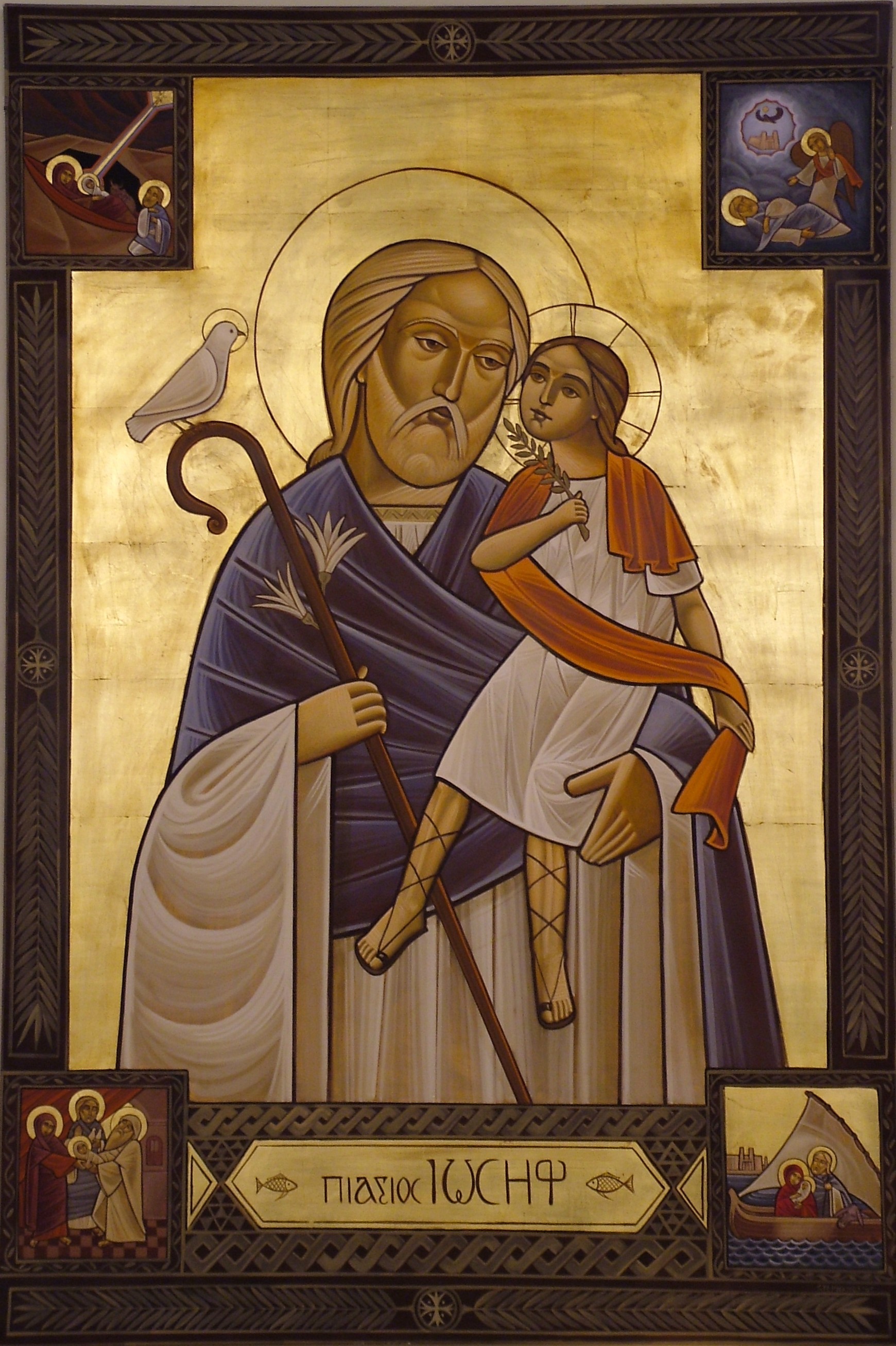![]() Shawn Tribe who writes at the New Liturgical Movement website just posted this image. It is a newly discovered ancient icon.
Having described Stephane Rene's neo-Coptic style as a more polished form of the 'folksy' original Coptic style, here comes something to disprove my point! This is 15th century but it reflects high level of drawing skill. One of the great difficulties when I paint in the iconographic or the gothic style is conforming to the style, yet still managing to have the figure to read anatomically and the clothing to drape naturally so that the folds reflect the figure underneath. The artist seems to have taken great care, for example, with the blue shawl of Our Lady to do this.
Shawn Tribe who writes at the New Liturgical Movement website just posted this image. It is a newly discovered ancient icon.
Having described Stephane Rene's neo-Coptic style as a more polished form of the 'folksy' original Coptic style, here comes something to disprove my point! This is 15th century but it reflects high level of drawing skill. One of the great difficulties when I paint in the iconographic or the gothic style is conforming to the style, yet still managing to have the figure to read anatomically and the clothing to drape naturally so that the folds reflect the figure underneath. The artist seems to have taken great care, for example, with the blue shawl of Our Lady to do this.
The Coptic Church is one of the Oriental Orthodox churches. The Oriental Orthodox churches are those Christian bodies that broke away with Rome in the wake of the Council of Chalcedon in 451, over disagreements on the christological doctrines affirmed by that council. The Oriental Orthodox churches include the Armenian Apostolic, Syrian, and Coptic Orthodox—but not the larger Russian, Greek, and other Orthodox churches of the Byzantine tradition. The Pope has fostered dialogue with these ancient churches. CatholicCulture.org writes about this here.
![]()







